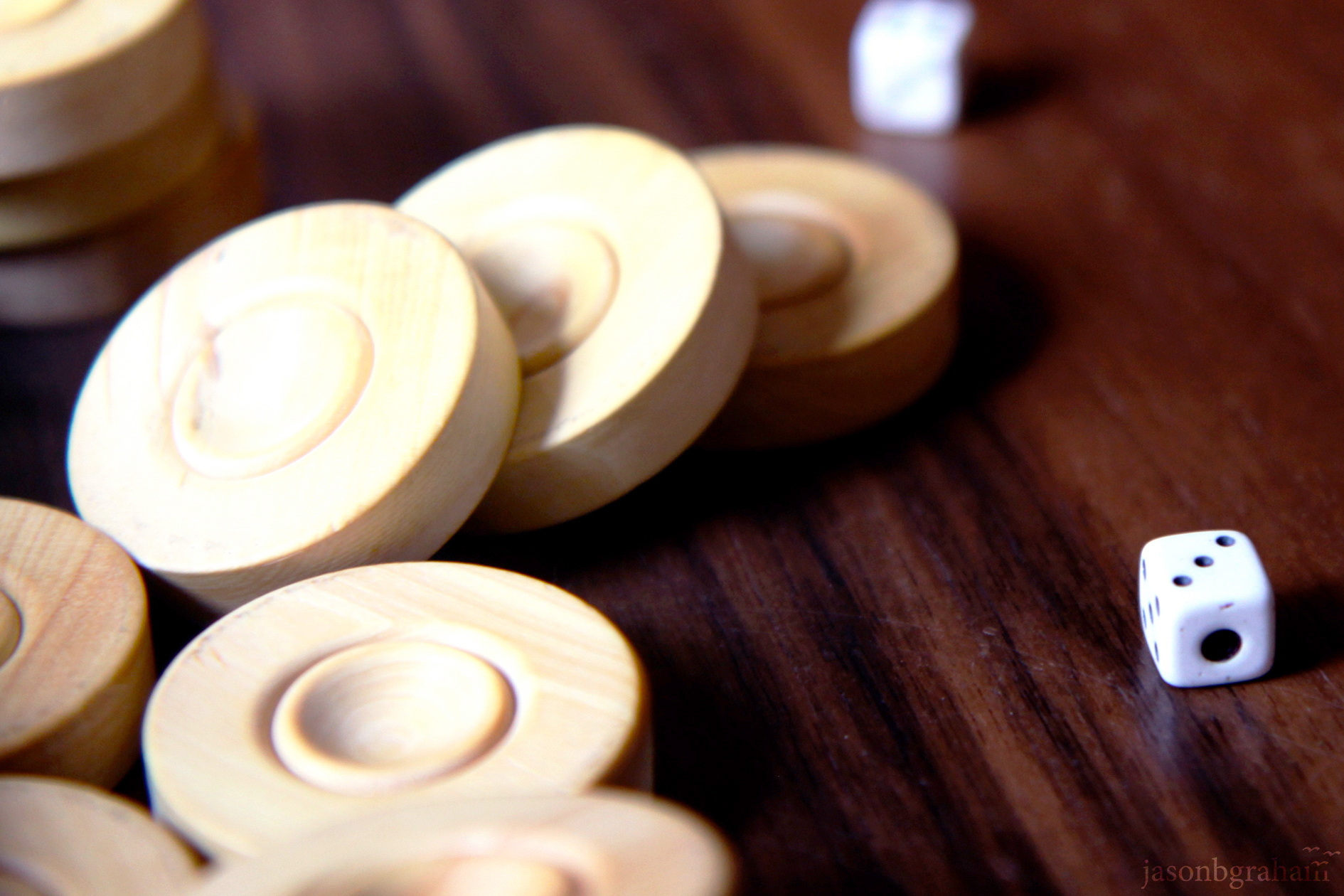BACKGAMMON | TAVLA
Backgammon has a documented history dating back more than 5,000 years making it one of the oldest games in existence. Today, backgammon can be thought of as the national board game of Turkey. It is played nearly everywhere (including street corners, cafes and the beach) throughout the country. Backgammon is typically played to the best of five games and often accompanied by coffee, tea or raki. The loser of the match commonly picks up the tab for the beverages.
HOW TO PLAY
• Board Layout
Backgammon is a game for two players, played on a board consisting of twenty-four narrow triangles called points. The triangles alternate in color and are grouped into four quadrants of six triangles each. The quadrants are referred to as a player’s home board and outer board, and the opponent’s home board and outer board. The home and outer boards are separated from each other by a ridge down the center of the board called the bar.
• Points
The points are numbered for either player starting in that player’s home board. The outermost point is the twenty-four point, which is also the opponent’s one point. Each player has fifteen checkers of one color. The initial arrangement of checkers is: two on each player’s twenty-four point, five on each player’s thirteen point, three on each player’s eight point, and five on each player’s six point.
• Objective
The object of the game is move all your checkers into your own home board and then bear them off. The first player to bear off all of their checkers wins the game.
• Movement
To start the game, each player throws a single die. This determines the player to go first. If equal numbers come up, then both players roll again until they roll different numbers. The player throwing the higher number earns the first roll. After the first roll, the players throw two dice and alternate turns. The roll of the dice indicates how many points, or pips, the player is to move the checkers. The checkers are always moved forward, to a lower-numbered point. The following rules apply: A checker may be moved only to an open point, one that is not occupied by two or more opposing checkers; The numbers on the two dice constitute separate moves. For example, if a player rolls 5 and 3, the player may move one checker five spaces to an open point and another checker three spaces to an open point, or may move the one checker a total of eight spaces to an open point, but only if the intermediate point (either three or five spaces from the starting point) is also open.
• Hitting and Entering
A point occupied by a single checker of either color is called a blot. If an opposing checker lands on a blot, the blot is hit and placed on the bar. Any time a player has one or more checkers on the bar, the first obligation is to enter those checker(s) into the opposing home board. A checker is entered by moving it to an open point corresponding to one of the numbers on the rolled dice.For example, if a player rolls 4 and 6, the player may enter a checker onto either the opponent’s four point or six point, so long as the prospective point is not occupied by two or more of the opponent’s checkers. If neither of the points is open, the player loses a turn. If a player is able to enter some but not all of his checkers, the player must enter as many as possible and then forfeit the remainder of the turn. After the last of a player’s checkers has been entered, any unused numbers on the dice must be played, by moving either the checker that was entered or a different checker.
• Bearing Off
Once a player has moved all of the fifteen checkers into the home board, the player may commence ‘bearing off.’ A player bears off a checker by rolling a number that corresponds to the point on which the checker resides, and then removing that checker from the board. Thus, rolling a 6 permits the player to remove a checker from the six point. If there is no checker on the point indicated by the roll, the player must make a legal move using a checker on a higher-numbered point. If there are no checkers on higher-numbered points, the player is permitted (and required) to remove a checker from the highest point on which one of the checkers resides. A player is under no obligation to bear off if an otherwise legal move is available.
FOLKLORE
Some believe that tavla was created as representation of our journey through life. Hours are represented by 24 total points. Day and night are represented by the contrasting colors. Days are represented by thirty checkers. Months are represented by twelve points. Seasons are represented by four quadrants. Chance is represented by the dice. Lastly, skill and experience are represented by the players.
Turkish Culture
Backgammon
Hotel Lavanda
Şile, Turkey
Istanbul Province
Marmara Region

